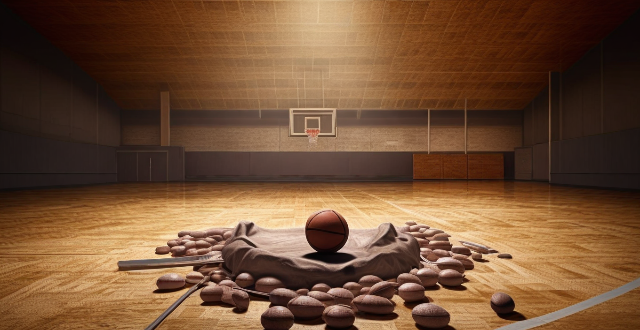Basketball requires both offensive and defensive skills, with defense being crucial for winning games. To practice defense in basketball, focus on footwork drills, maintaining a proper defensive stance, on-ball defense, help defense, closeout drills, boxing out, and team defense drills. By incorporating these methods into your practice routine, you'll improve your defensive skills and become a more well-rounded player.

Defensive Techniques in Basketball
Basketball is a sport that requires both offensive and defensive skills. While offense gets most of the attention, defense is equally important for winning games. Here are some methods to practice defense in basketball:
1. Footwork Drills
Proper footwork is essential for good defense. You should be able to move quickly and change direction without losing balance. Some drills you can do include:
- Lateral Shuffles: Move sideways across the court, keeping your feet shoulder-width apart and your knees bent.
- Front and Back Steps: Step forward with one foot and then back with the other, maintaining a low center of gravity.
- Pivot Steps: Pivot on one foot while moving the other foot around it in a circular motion.
2. Defensive Stance
A proper defensive stance allows you to react quickly to your opponent's moves. To assume a good defensive stance:
- Stand with your feet shoulder-width apart.
- Bend your knees slightly.
- Keep your arms outstretched, ready to contest any shot or pass.
- Keep your eyes on the opponent's waist, not their eyes or the ball.
3. On-Ball Defense
When guarding an opponent who has the ball, focus on staying between them and the basket. Use your body to block their path and force them away from the basket or into areas where they are less comfortable shooting. Practice these techniques by playing one-on-one games or during team drills where you must stop the offense from scoring.
4. Help Defense
Help defense involves assisting teammates who are being beaten by their opponents. When practicing help defense, work on:
- Communication: Call out when you're going to help so your teammate knows you're coming.
- Timing: Time your help so that you arrive just as the offensive player is making their move.
- Recovery: Once you've helped, return quickly to your original assignment.
5. Closeout Drills
A closeout is when you move toward an offensive player who doesn't have the ball but is open for a pass. To practice this effectively:
- Start at half-court and sprint towards the sideline.
- As you get closer, slow down and assume a defensive stance.
- Imagine the player catching the ball and make sure you're in position to contest their shot.
6. Boxing Out
Boxing out is crucial for securing rebounds. To practice boxing out:
- Start with your back to the basket and your feet shoulder-width apart.
- Assume a wide stance, bending your knees and lowering your center of gravity.
- Use your arms to feel for the opponent and keep them behind you.
- Jump straight up to grab the rebound rather than reaching for it.
7. Team Defense Drills
Team defense involves all five players working together to prevent the opposing team from scoring. Some team defense drills include:
- Transition Defense: Practice getting back on defense quickly after a missed shot or turnover.
- Zone Defense: Work on covering specific areas of the court rather than individual players.
- Pressure Defense: Apply full-court pressure to force turnovers and create scoring opportunities for your team.
By incorporating these methods into your practice routine, you'll improve your defensive skills and become a more well-rounded basketball player. Remember, defense wins championships!